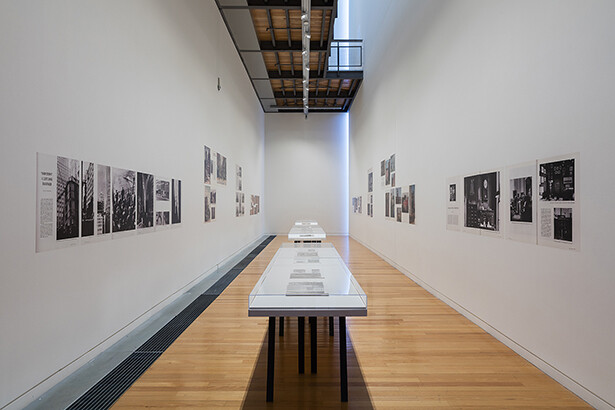July 30–September 18, 2016
Adam Art Gallery
Victoria University of Wellington
Gate 3, Kelburn Parade PO Box 600
Wellington
New Zealand 6140
Hours: Tuesday–Sunday 11am–5pm
Walker Evans: The Magazine Work, curated by David Campany
Sherrie Levine: African Masks After Walker Evans
Patrick Pound: Documentary Intersect
Sonya Lacey: Newspaper for Vignelli
The Adam Art Gallery is pleased to present a series of exhibitions that examine the circulation of images through the formats of the magazine, the newspaper, the book, and the postcard, to test and expand models of authorship and reflect upon the place and status of photography and printed matter within the history of art.
Central to the series is Walker Evans: The Magazine Work, a touring exhibition curated by David Campany, which has been re-conceived for this occasion. The show brings together vintage copies of the magazines to which Walker Evans contributed and presents these alongside largescale digital prints of his photo-essays. It aims to expand knowledge of the great modernist photographer by addressing this lesser-known aspect of his career, exploring how Evans worked for various American magazines conceiving, shooting, editing, writing, and designing stories in what Campany has called a “resistant counter-commentary on American society and its values.”
Walker Evans’s work is juxtaposed with a new series of photographs by leading American artist Sherrie Levine, whose photographs “after Walker Evans” produced in the early 1980s were definitive for the appropriative strategies of the highly influential “Pictures Generation.” African Masks After Walker Evans, 2014, re-presents a set of 24 images drawn from the more than 600 Evans took of objects in MoMA’s 1935 exhibition African Negro Art. These were shot on commission to supplement Evans’s meagre income and have only recently been reassessed as important components of his photographic oeuvre. Levine’s project not only allows viewers to assess Evans’s contribution to the re-evaluation of African art that was a hallmark of the modernist era, but it also invites reconsideration of her own position vis-à-vis his canonical status as a modernist exemplar.
Melbourne-based Patrick Pound’s exhibition Documentary Intersect also liberally appropriates readymade images. Pound’s collecting habits are voracious, and here we see his ongoing interest in creating typologies through arranging items according to shared content; “tears,” “floral clocks,” “crime scenes,” “sleepers,” and so on. Laying these out in linear sequences, Pound discovers points of intersection to create complex grids of structured yet chaotic imagery. One such sequence—a series of postcards of San Francisco’s famous “Cliff House”—strategically connects his work to Walker Evans, who likewise was a keen collector of picture postcards, and who features a postcard of this same structure in his photo-essay “Come on Down” in Architectural Forum, July 1962.
Finally, Wellington-artist Sonya Lacey’s 16mm film Newspaper for Vignelli is a series of tracking shots which tail the pages of a newspaper as they continually tumble just-out-of-reach within a gusty outdoor setting. The newspaper is Lacey’s carefully constructed facsimile of the European Journal (1978), a proposed-but-never-published newspaper designed by the well-known modernist graphic designers Massimo and Lella Vignelli. While only Vignelli’s mockup of his cover survives, Lacey has imagined the journal’s complete contents, recreating their signature gridded blocks, uniformly scaled titles and bold sans-serif headers. Casting this design into a turbulent environment, she considers the fate of “good” design in a world of commercial imperatives.
For more information and to purchase copies of accompanying publications visit: www.adamartgallery.org.nz
About Adam Art Gallery
The Adam Art Gallery is the art gallery of Victoria University of Wellington, Wellington, New Zealand. It is a forum for critical thinking about art and its histories as well as the professional structure within which the Victoria University Art Collection is managed. The gallery’s programmes aim to test and expand art form and disciplinary boundaries and create new opportunities to bring artists together and generate fresh conversations. The gallery is a remarkable architectural statement designed by the late Sir Ian Athfield, one of New Zealand’s foremost architects.

